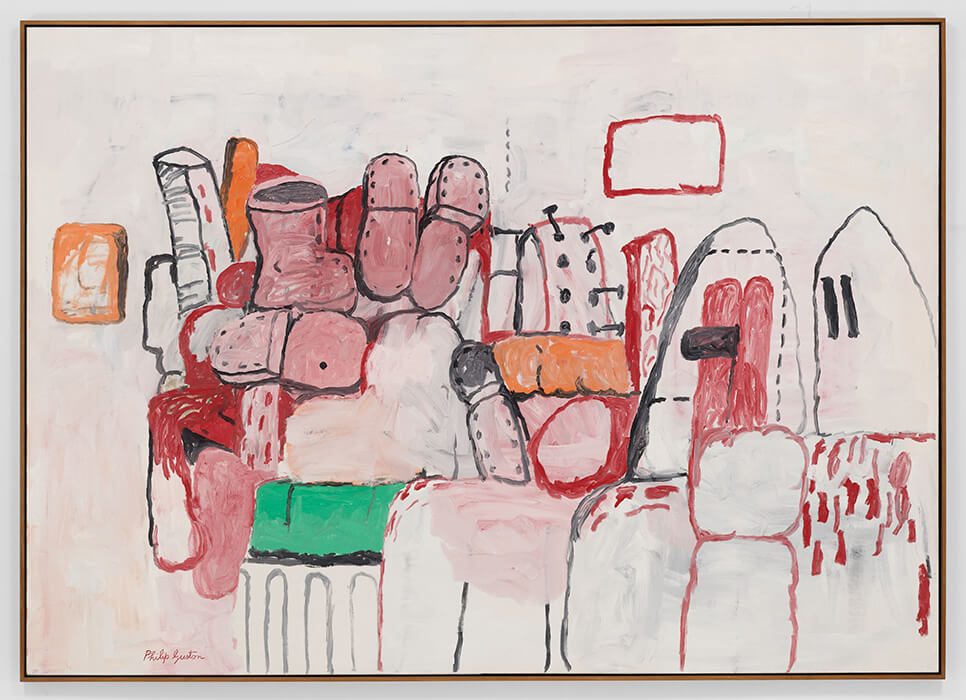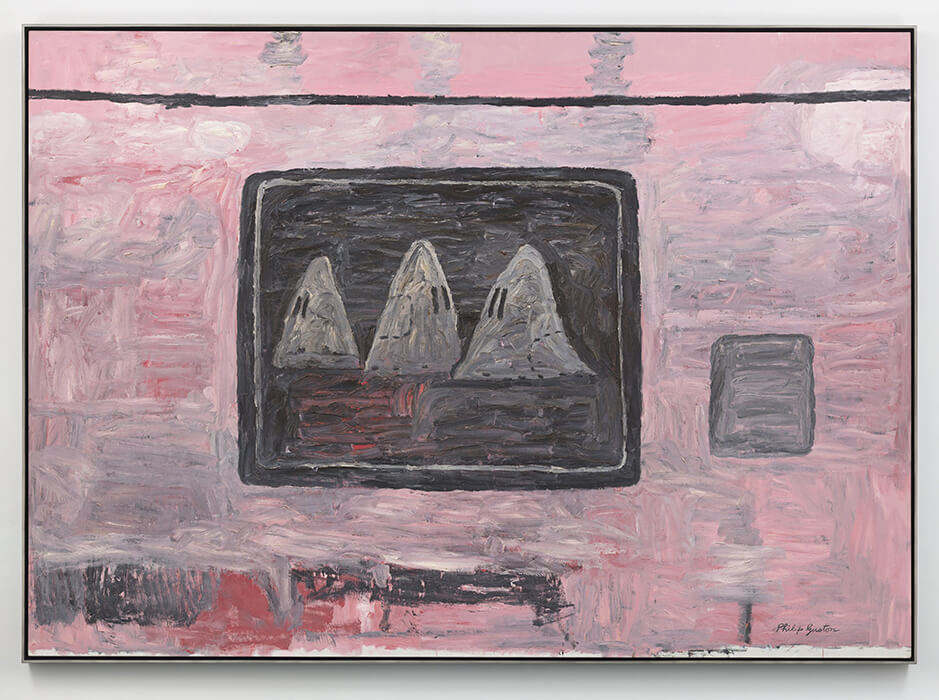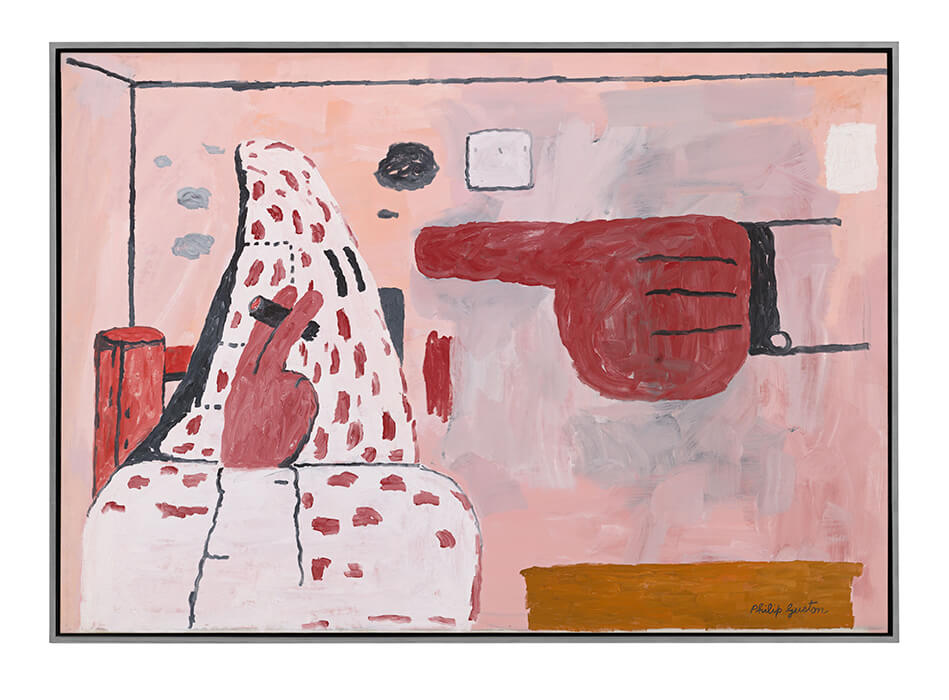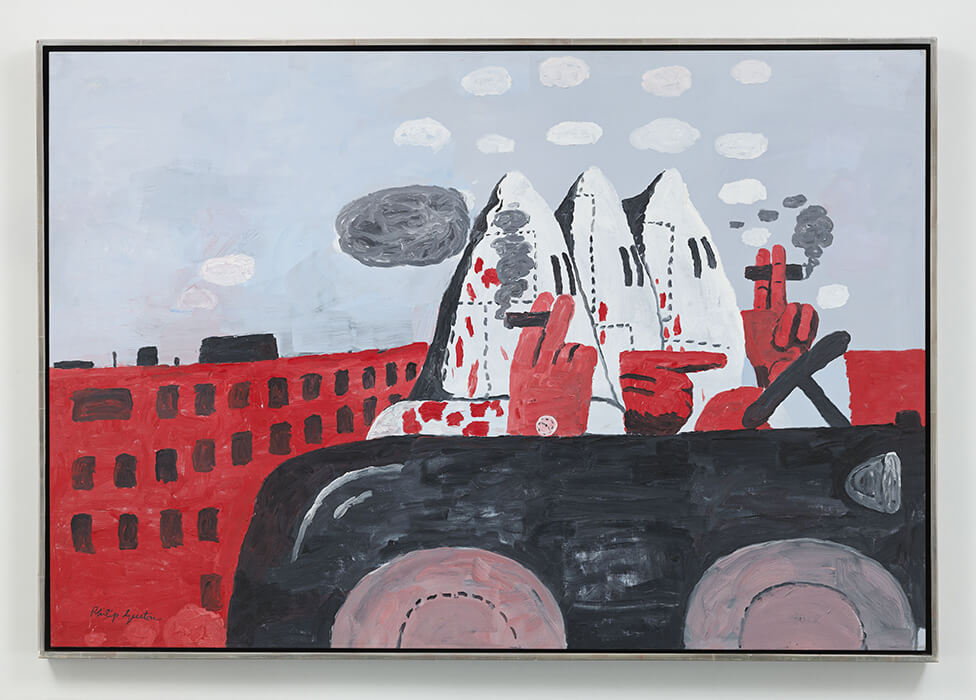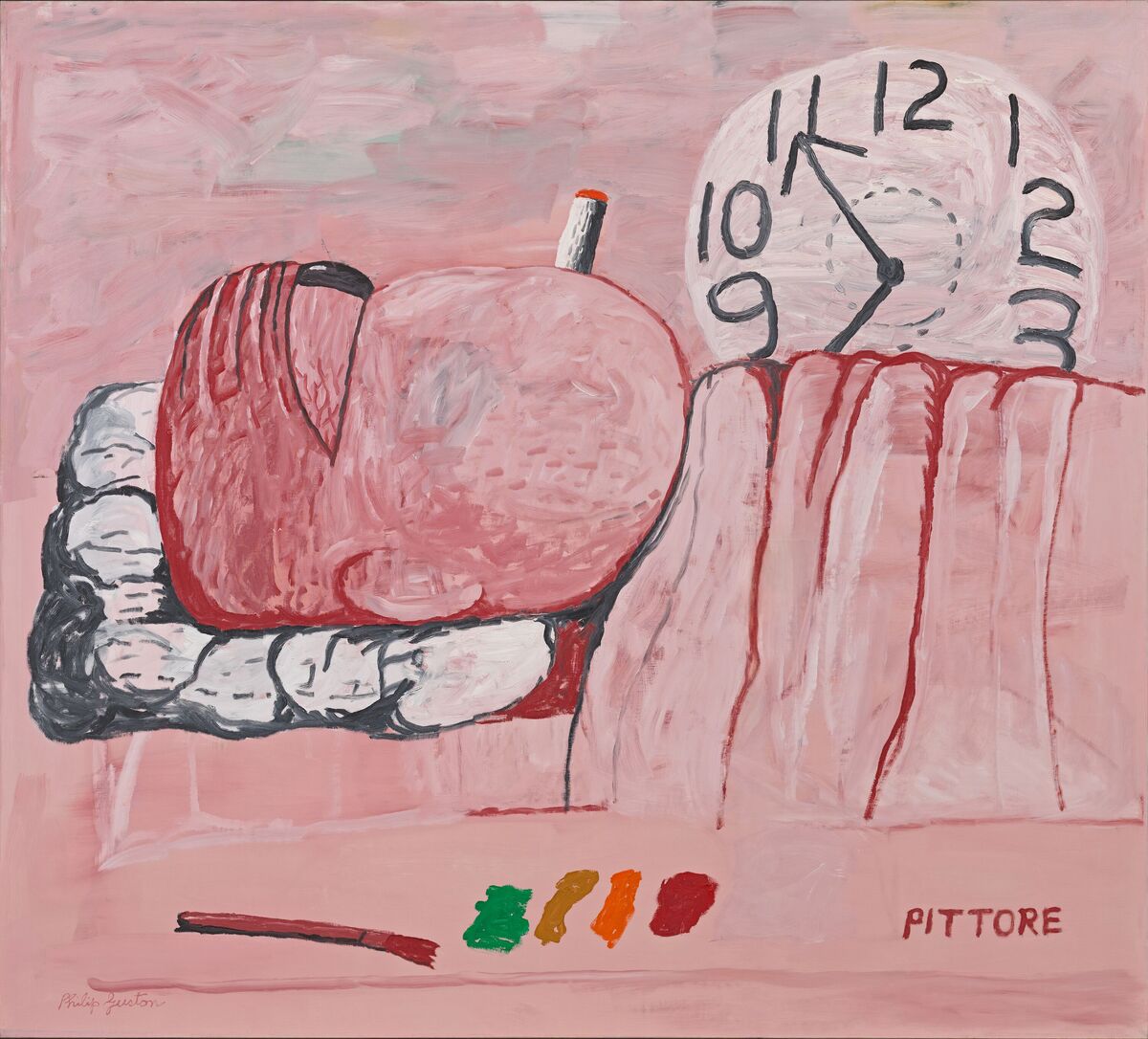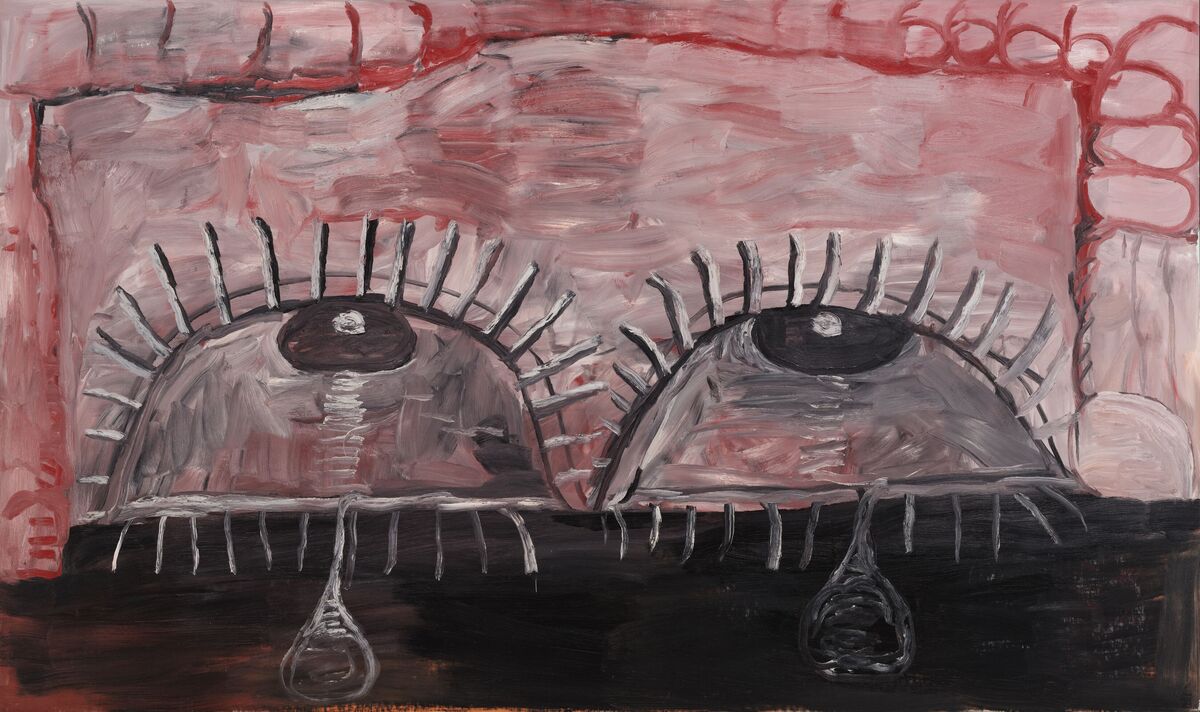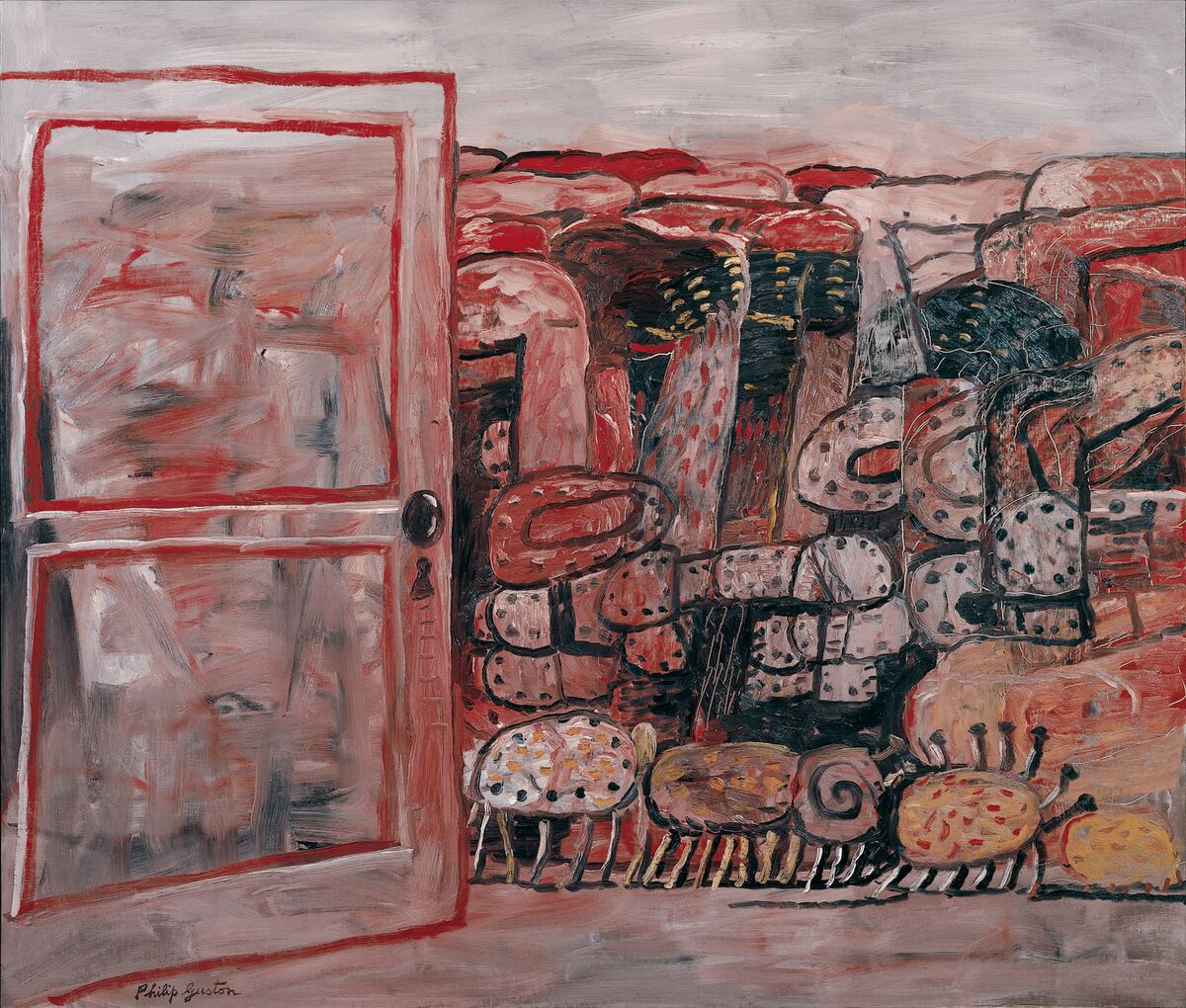ART CITIES:N.York-Philip Guston
 Philip Guston is one of the great luminaries of twentieth-century art. His commitment to producing work from genuine emotion and lived experience ensures its enduring impact. Guston’s legendary career spanned a half century, from 1930 to 1980. His paintings – particularly the liberated and instinctual forms of his late work – continue to exert a powerful influence on younger generations of contemporary painters.
Philip Guston is one of the great luminaries of twentieth-century art. His commitment to producing work from genuine emotion and lived experience ensures its enduring impact. Guston’s legendary career spanned a half century, from 1930 to 1980. His paintings – particularly the liberated and instinctual forms of his late work – continue to exert a powerful influence on younger generations of contemporary painters.
By Dimitris Lempesis
Photo: Hauser & Wirth Gallery Archive
The exhibition “Philip Guston. 1969 – 1979” focuses on the breakthrough figuration that emerged in the final decade of the 20th century Philip Guston’s career. Including paintings never before exhibited, the exhibition brings together 18 masterworks created after the artist turned away from abstraction to assert an unprecedented new figural language. While critics denounced his dramatic shift toward dark, cartoon-like imagery, the paintings of Guston’s last years are today considered milestones of modern art. They display not only great technical mastery, but uncompromising courage in directly addressing the injustices of American society. Made at the height of his creative life, the paintings on view attest to Guston’s enduring influence and astonishing relevance to contemporary artists and the public now. The exhibition spotlights the confessional intimacy, introspection and self-revelation of Guston’s late canvases, with their universal themes. Here, the artist’s exploration of the human condition harkens back to motifs from his earliest figurative works of the 1930s and 40s, informed by the bigotry and racist violence he witnessed as a boy in Los Angeles. The exhibition traces the evolution of Guston’s return to figuration from the very end of the 1960s, when his distinctive hooded figures first appeared as avatars of our complicity in the everyday evils of society. The increasing urgency of Guston’s imagery over the next decade is evidenced in a richly rendered and deeply unsettling iconography. His distinctive visual language includes disembodied legs, pointing fingers, and piles of shoes that summon the horrors of the Holocaust and presage later genocides and racial terror. But Guston’s brilliance resides in his ability to convey the persistence – albeit delicate – of hope within this dark realm, with an iconic lightbulb suggesting an eternal potential for illumination. Six paintings feature the artist’s sinister but cartoonish hooded figures, unmistakably reminiscent of the Ku Klux Klan. Prompted by the violence and civil unrest in America during the late 1960s, Guston’s paintings here speak to the insidious banality with which evil permeates society: his hooded figures are engaged not in acts of terror but in ordinary everyday pursuits, smoking their cigars and going about the quotidian routines of American life, as in the paintings “Riding Around” and “Blackboard”, as well as “Open Window II” (all 1969), one of four works being presented to the public for the first time in this exhibition. In this group of paintings, Guston holds up a mirror not only to America’s racist past and present, but to his own culpability by dint of white privilege and the complicity it engenders. In “The Studio” (1969), one of the artist’s most iconic paintings, Guston depicts himself in the grand tradition of Western art, as an artist at work before his easel. In this allegory of painting, however, Guston occupies not the exalted role shown in celebrated self- but as one of his own hooded figures, cigar in one hand and paint brush in the other, hood splattered with blood red marks. By identifying himself with the enemy, Guston creates a radical image of an artist wrestling with both the act of painting and his own role in the state of the world. In the face of overwhelmingly negative critical response to the Marlborough Gallery exhibition, Guston and his wife Musa escaped to the American Academy in Rome. In Italy, the artist immersed himself in the work of the great Italian masters he studied in his youth. Following his return home to Woodstock, New York, Gusto began to remove the hood. A bean-shaped head with furrowed brow and staring eye emerges, often lying in bed, smoking a cigarette.
In the exhibition “Pittore” (1973) finds this avatar in a night room where an imposing clock looms above and the tools of the artist’s trade rest nearby. The mounting intensity of Guston’s work over the ensuing years before his death in 1980 comes into full focus in the second room of the exhibition, where twelve major paintings made between 1973 and 1979, including “Pittore” are on view. Progressively more enigmatic, richly rendered, and unsettling, the imagery that emerged from the artist’s psyche onto the canvas during his overnight sessions in the studio were as surprising to him as they were to critics and the public. Guston’s unique visual language, growing from canvas to canvas, incorporates tangled and disembodied piles of legs, shields, bugs, whips, doors, and piles of shoes that recall the horrific images that emerged via the media from the liberation of Nazi concentration camps to the carnage of the Vietnam War and the Killing Fields of Cambodia. In “Back View II” (1977), Guston presents the back of a colossal figure heading away from the viewer, toward the horizon. Although monumental in stature, this figure appears burdened by all he carries on his back –shoes, legs, and shields that resemble trash can lids. The image is widely regarded as a portrait of Guston’s father, a former blacksmith who, as a Russian Jewish immigrant, had been reduced to working as a junkman. Guston’s inheritance – his fundamental sensitivity to the weight of the human condition, his artistic cleaving to the tenets of the Renaissance – coalesce into this remarkable portrait. The influence of the great masters on Guston is evident in “Sleeping” (1977), a self-portrait of the artist curled up in bed, alone under a blanket, still wearing his shoes. His wrinkled brow is adorned with gray coils of hair. The foreshortened composition and delicately draped fabric call to mind the Lamentation of Christ by Italian Renaissance master Andrea Mantegna, revered by Guston, where a lone figure is placed within a confined and somber space, head turned and eyes closed, portrayed through a forced perspective originating at their feet.
Photo: Philip Guston, Back View II, 1978, Oil on canvas ,185.4 x 205.7 cm / 73 x 81 in, © The Estate of Philip Guston, Private Collection, Courtesy Hauser & Wirth Gallery
Info: Hauser & Wirth Gallery, 542 West 22nd Street, New York, NY, USA, Duration: 9/9-30/10/2021, Days & Hours: Tue-Sat 10:00-18:00, www.hauserwirth.com
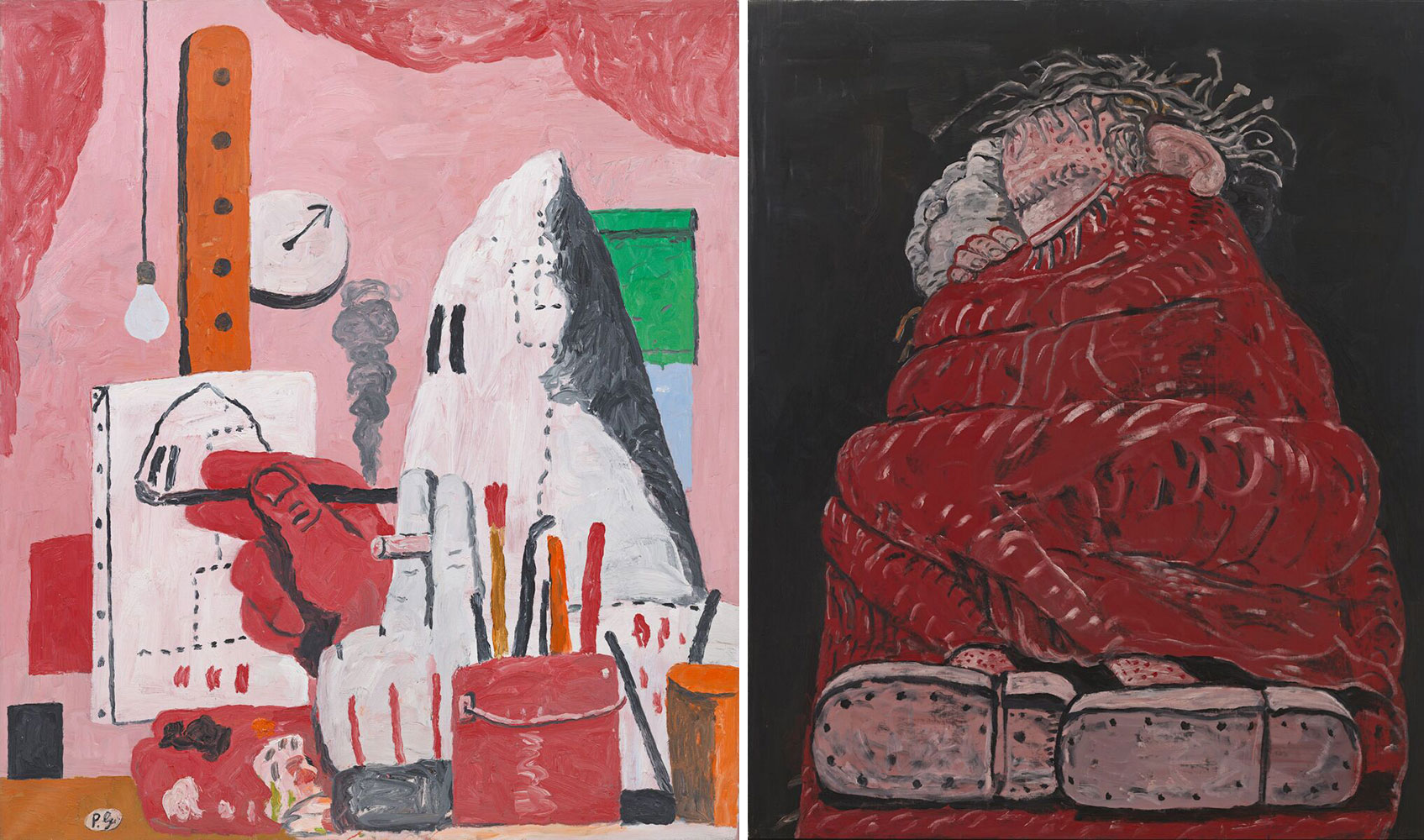
Right: : Philip Guston, Sleeping, Oil on canvas, 213.4 x 175.3 cm / 84 x 69 in, © The Estate of Philip Guston, Private Collection, Courtesy Hauser & Wirth Gallery
